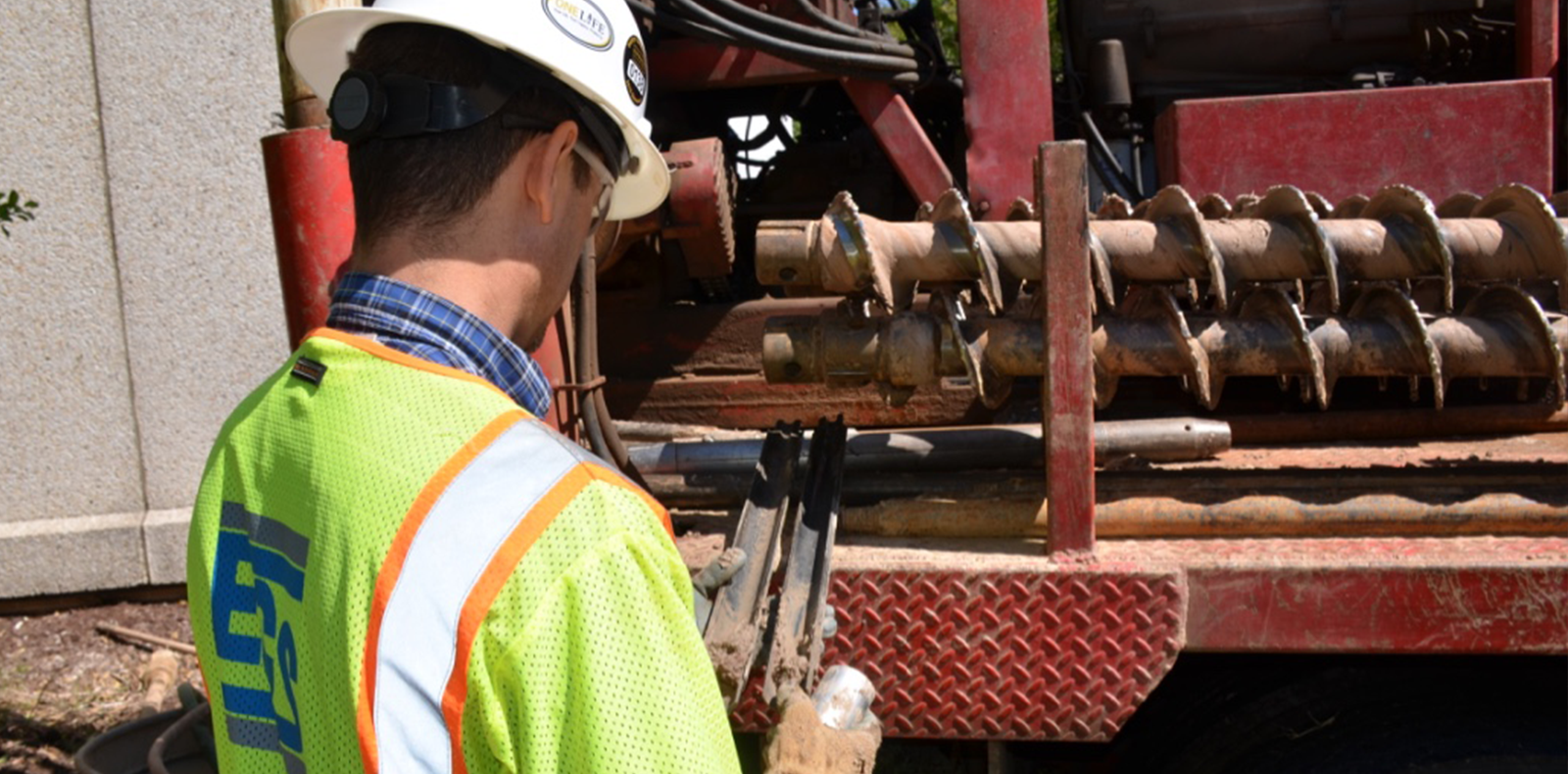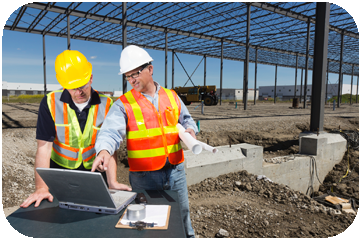Patterns Affecting the Future of Geotechnical Eng Practices
An Extensive Consider the Scope of Practice for Geotechnical Designers and Their Influence On Job Usefulness and Threat Mitigation
The range of technique for geotechnical engineers encompasses a range of critical responsibilities that directly influence project feasibility and risk management. From carrying out thorough site examinations to examining subsurface conditions, their expertise is crucial in forming foundation style and building strategies. As jobs significantly experience complex geological challenges, recognizing the nuanced duty of these professionals ends up being critical for making certain effective outcomes. The ramifications of their job prolong beyond plain evaluation; they can substantially modify the trajectory of a task. What details approaches do geotechnical engineers employ to browse these complexities effectively?
Roles and Responsibilities of Geotechnical Engineers
Geotechnical engineers play a vital function in the foundation of building projects, ensuring that frameworks are improved strong ground. Their duties include a series of tasks crucial for assessing dirt and rock properties, which directly affect job usefulness and safety. Initially, geotechnical engineers conduct website investigations to gather vital information pertaining to subsurface problems. This includes drilling boreholes, sampling soil and rock, and carrying out in-situ tests to figure out material features.

Cooperation is likewise a crucial facet of their function; they function carefully with civil engineers, architects, and environmental professionals to guarantee that geotechnical factors to consider are integrated right into total task planning. Eventually, the competence of geotechnical engineers is vital in promoting the security, sustainability, and feasibility of building ventures.
Trick Locations of Geotechnical Evaluation
Dirt examples and geological surveys are fundamental elements in the key locations of geotechnical analysis. These activities offer essential data regarding the physical and chemical residential or commercial properties of the subsurface products, making it possible for engineers to examine website problems properly. The analysis usually includes dirt category, compaction, shear toughness, and permeability, every one of which are crucial for comprehending the actions of dirts under different loading problems.
One more substantial area of focus is slope stability analysis, which reviews the threat of landslides or soil erosion. This entails assessing the geometry of inclines, dirt kinds, and groundwater conditions. Website characterization is also vital, as it includes a comprehensive investigation of the website's background, including previous building and construction, contamination, and all-natural risks.
In addition, groundwater evaluation plays a vital function in geotechnical evaluation, affecting both the layout and building and construction phases. Comprehending the groundwater table, flow direction, and possible variations is crucial for reliable structure design and stormwater administration.
Together, these vital locations of geotechnical analysis create a comprehensive structure that notifies decision-making procedures, ensuring sustainable and safe engineering techniques while reducing potential threats connected with subsurface conditions.
Effect On Project Expediency
The expediency of a building project pivots significantly on the insights gained from geotechnical examinations. These examinations give essential information regarding dirt residential properties, groundwater conditions, see page and subsurface characteristics, which are critical for determining the suitability of a website for building and construction. By evaluating aspects such as soil bearing ability, settlement potential, and slope stability, geotechnical engineers play a pivotal role in evaluating whether a job can proceed as intended or if modifications are required.
Additionally, the outcomes of geotechnical researches directly influence job layout and construction approaches. Exact geotechnical data enables informed decision-making, ensuring that structural designs fit site-specific conditions and follow regulatory needs. This procedure aids in enhancing resource allowance, thereby decreasing unanticipated hold-ups and price overruns.
Furthermore, an extensive geotechnical analysis boosts the total stability of a project by determining possible challenges early in the preparation stage. By addressing these challenges proactively, stakeholders can improve the task's chance of success, making sure that it meets both monetary and useful purposes. In summary, the contributions of geotechnical engineers are integral to establishing job expediency, consequently preparing for effective project implementation.
Risk Mitigation Techniques
While building and construction jobs inherently include different unpredictabilities, carrying out efficient risk mitigation strategies can substantially decrease prospective problems developing from geotechnical variables. Geotechnical designers play a pivotal duty in identifying, analyzing, and attending to risks associated with subsurface conditions, guaranteeing that jobs proceed smoothly and continue to be within spending plan.
One key method involves extensive website examinations, that include dirt tasting, in-situ screening, and research laboratory analysis. These assessments provide critical data on soil actions, toughness, and make-up, enabling designers to design structures and earthworks that are both secure and reliable. Furthermore, employing advanced modeling strategies, such as limited component evaluation, enables engineers to anticipate just how dirt and architectural communications might evolve under different loading conditions.
Another reliable reduction method is the implementation of appropriate layout alterations, such as utilizing support strategies or taking her response on different building and construction techniques, which can enhance stability and lower vulnerability to geotechnical issues. try this In addition, continuous monitoring of website problems during construction can help with prompt interventions, thus reducing the possibility of unforeseen difficulties.
Study and Real-World Applications
Situation studies provide beneficial insights right into the functional applications of geotechnical engineering concepts and highlight the effectiveness of threat mitigation approaches in real-world circumstances. One notable instance is the building of the Centuries Dome in London, where cutting-edge ground treatment strategies were carried out to address difficult soil problems. By utilizing deep cement blending and soil stabilization approaches, engineers effectively created a steady structure that mitigated prospective negotiation dangers, making sure the project's usefulness.
An additional case is the stabilization of the hillside for the new highway in The golden state, where extensive incline evaluation and surveillance were utilized. Geotechnical designers made use of retaining walls and drainage systems to manage groundwater, dramatically reducing the risk of landslides. This proactive method not only protected the stability of the highway but also enhanced public safety.
Additionally, the growth of a significant airport showed the relevance of comprehensive site investigations. geotech engineer. Geotechnical engineers recognized troublesome dirt layers and suggested particular structure layouts, bring about an effective job conclusion with decreased hold-ups. These study emphasize the critical role that geotechnical engineers play in evaluating risks and executing effective remedies, consequently enhancing task expediency and overall success
Verdict

By analyzing elements such as dirt bearing capability, negotiation capacity, and slope security, geotechnical engineers play a crucial role in examining whether a job can proceed as intended or if adjustments are necessary.
In summary, the contributions of geotechnical engineers are important to establishing task feasibility, therefore laying the foundation for efficient task implementation.
Geotechnical designers determined troublesome soil layers and suggested particular structure styles, leading to a successful task conclusion with lessened hold-ups. geo tech engineering. These instance researches underscore the crucial role that geotechnical engineers play in examining dangers and executing efficient solutions, thereby improving job feasibility and general success
Via effective danger reduction techniques and the application of sophisticated modeling strategies, geotechnical designers boost task results and lessen dangers associated to dirt and groundwater problems.